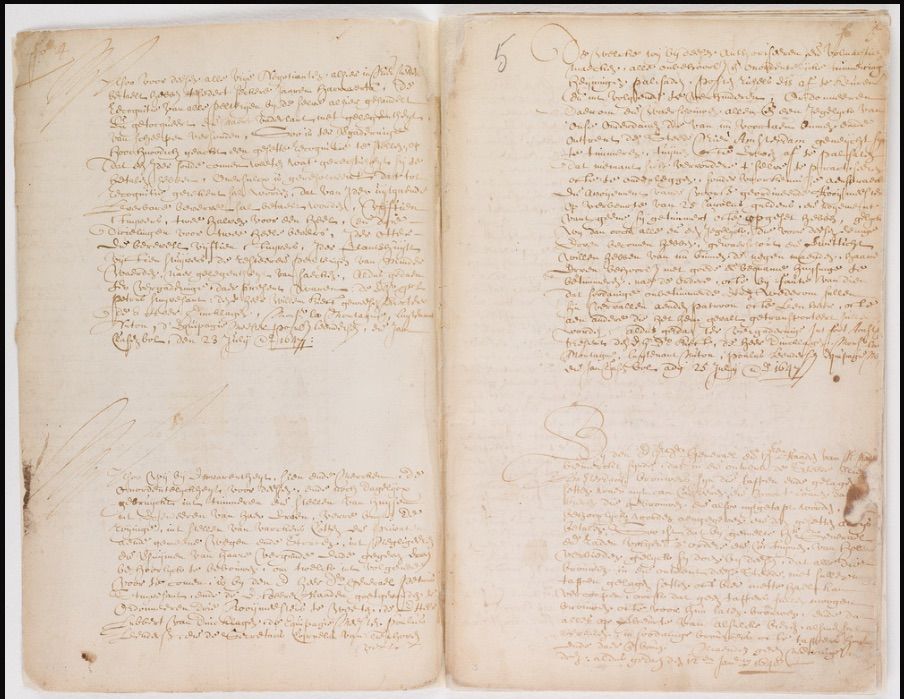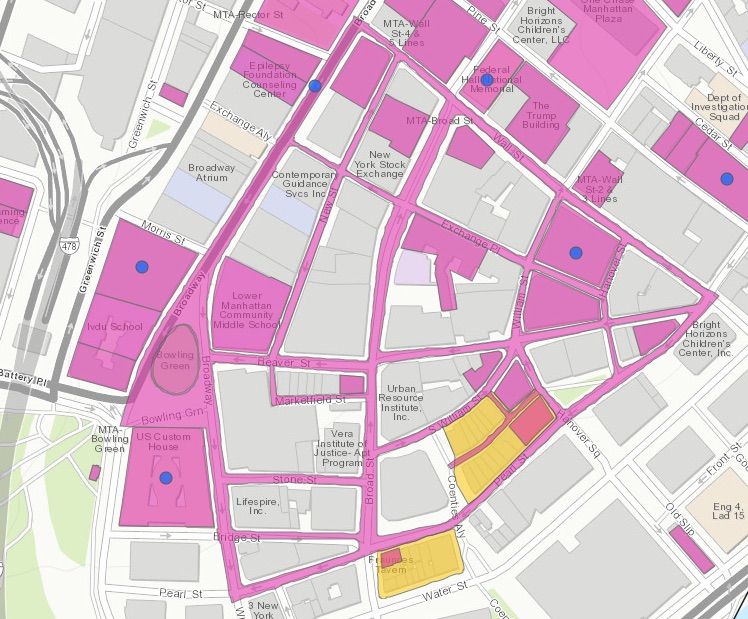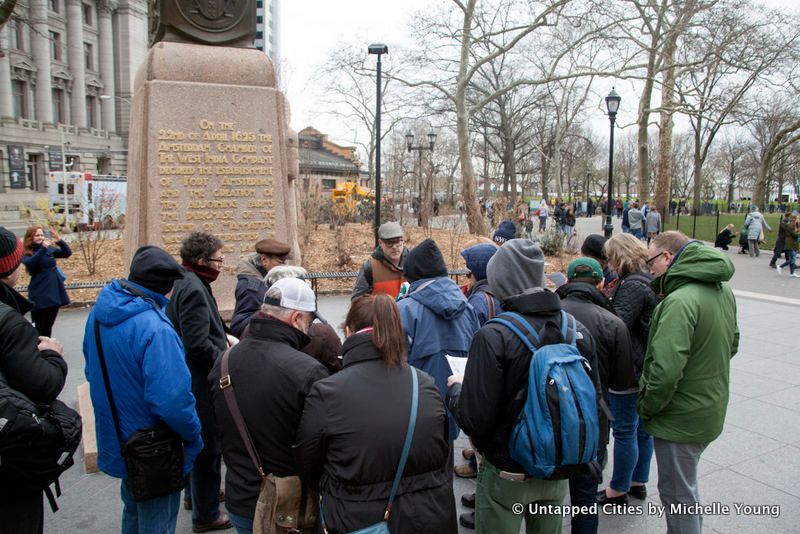100th Anniversary Great Nave Tour at the Cathedral of St. John the Divine
Celebrate the 1925 construction of the stunning nave inside the world's largest Gothic cathedral!


On July 25, 1647, New York City’s first zoning law was put into place. The law came from the iron fist (or wooden peg) of Director General Peter Stuyvesant himself. It was one of the first in a series of decrees meant to transform New Amsterdam from the unruly backwater it had become to a full-fledged city. (Coincidentally, Sunday was also the 100th Anniversary of NYC’s Zoning Resolution of 1916, and the Center for Architecture released a website in celebration, Zoning @ 100).
Some important background:
Most of you probably know that New York was founded by the Dutch. If this is breaking news to you please read here, here and here for more information (and come to our popular tour, the Remnants of Dutch New Amsterdam).
Unlike other New World colonies, it was an outpost of the Dutch West India Company not the Dutch government itself. In essence, New Amsterdam was a company town run by men who were all out to turn a profit.
After a disastrous few years under the leadership of its fifth Director General, Willem Kieft, New Amsterdam was broke, filthy, and on the brink of annihilation. It was said by Stuyvesant himself that Kieft had engaged in “land-destroying and people expelling wars with the cruel barbarians (the Native American population)” which had served to drive many of the settlers back to the safety of Europe leaving around “250 or 300 men capable of bearing arms.” According to Edwin Burrows and Mike Wallace’s Gotham “around 700 people, still fearful of reoccupying their farms, cowered in make shift huts around Fort Amsterdam” which Stuyvesant said “I found resembling more a mole hill than a fortress, without gates, the walls and bastions trodden underfoot by men and cattle.”
So what does any good company do when their second rate beaver hunting branch is going to fail? They transfer their best manager to turn the crappier office around. Enter Peter Stuyvesant fresh off of completing a tour down in Curacao where he not only left a sterling performance record but also lost his right leg to a Spanish cannonball. This left him with a wooden peg leg fitted with a silver band. The prosthetic necessity would lend to Stuyvesant’s two legendary nicknames: Peg-Leg Pete and Old Silver Leg.
It was reported when Stuyvesant first touched down in New Amsterdam on May 11, 1647 he exclaimed to his new charges, “I shall govern you as a father his children.” Pete was clearly fixing to make himself a 17th century Rudy Giuliani, though far less right wing. He made good on that promise and immediately went to work cleaning up New Amsterdam. One of the things that stuck in his silver-banded craw more than anything, besides cart speeding, disorderly public drunkenness or skipping out on church, was the mess of blurred property lines and muddy “footpaths” the settlers called streets.
According to Gotham, Stuyvesant’s main objective was to: “turn New Amsterdam into the kind of community that would appeal to the Dutch taste for urban life. For the Netherlands (unlike, say, England) was a nation of town dwellers, known for their civic consciousness and for the love of public tidiness that had led them to adopt the broom as a symbol of national identity and purpose.”
After a mere two months in office, Stuyvesant made the following decree:
“As we have seen and remarked the disorderly manner, hitherto and now daily practiced in building and erecting houses, in extending lots far beyond their boundaries, in placing pig pens and privies on the public roads and streets, in neglecting the cultivation of granted lots, the Director General Petrus Stuyvesant and Council have deemed it advisable to decide upon the appointment of three Surveyors, to wit: the Honble Lubbert van Dincklagen, the Equipage Master Poulus Leendersen and Secretary Cornelis van Tienhoven, whom we hereby authorize and empower, to condemn all improper and disorderly buildings, fences, palisades, post, rails etc. and to prevent their erection in the future…. Done at the meeting in Fort Amsterdam, … July 25, 1647.”

The actual written decree from Peter Stuyvesant’s log of ordinances from 1647. The image comes from the NYC Department of Records and Information Services.
You can read this and many other Stuyvesant decrees at the NYC Department of Records and Information Services and I will say that some of them are very entertaining.
Not only was this New York’s first zoning law, but it was also the ordinance that would define and preserve the street grid immortalized by the Castello Plan drafted by Jacques Cortelyou in 1660. That grid still forms the core of lower Manhattan today and was one of the few street patterns to receive landmark status in 1983.

The old Dutch street grid highlighted with its landmark status on the New York Landmark Preservation Commission’s Database.
Stuyvesant, although a killjoy and controversial figure in New York’s history, did transform New Amsterdam into one of the largest and most civilized urban centers in the New World. When he was forced to surrender to the British in September of 1664 he left behind a city with over 300 row houses, a population of 3000 people, two schools, an orphanage, a fire department, a police force, regularly enforced traffic laws, a postal system complete with town directory, paved streets, three canals and an infamous wall.
To hear this story and learn a ton more about Peter Stuyvesant, the Dutch street grid and all things New Amsterdam, join us for our popular tour The Remnants of Dutch New Amsterdam.

Our Remnants of New Amsterdam tour standing on the site of the old Dutch windmill which is now a flagpole donated by the Dutch government in 1926 to commemorate New York’s founding in 1626.
Next, read about 10 Things the Dutch Brought to NYC and America and how Zoning Shaped the NYC Skyline.
Subscribe to our newsletter